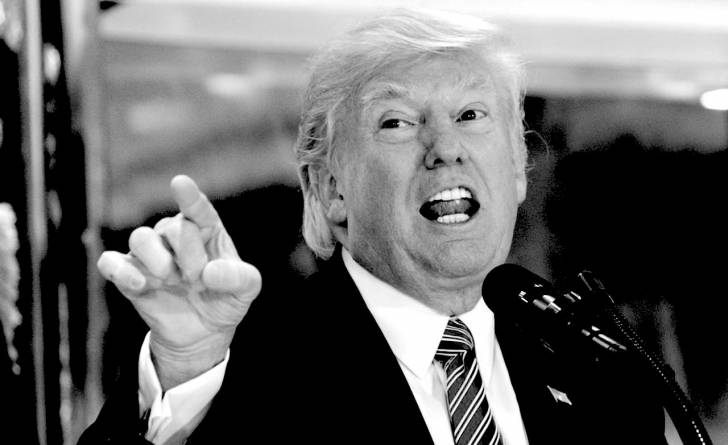by Hubert Marleau, Market Economist, Palos Management
November 14, 2024
Based on bold promises that Trump and his acolytes will be able to fix the economy and bring robust growth by unshackling the business sector with less regulations, less antitrust legislations, and lower corporate taxes, the S&P 500 flew off the map to register an all-time high of 6001. Speculators paid little attention to the disruptive effects that mass deportations of immigrants and the imposition of across-the-board tariffs could have on inflation. Generally speaking, companies are in favour of legal immigration because they need more workers, believing rather that the new administration will target immigrants who pose public safety and national security threats. They oppose tariffs, however, fearing tit for tat response from other countries. Fed official Kashkari is right when he says that in political campaigns candidates make broader declarations than what gets actually implemented.
Since the beginning of November, when it became clear that a Harris win was no longer in the bag, yield on 5-year Treasuries increased 10 bps to 4.30%. 5 bps were due to inflation expectations and the other 5 to either real growth or term premium or both. As a matter of fact, the stock market has exhibited no anxiety over inflation, the Cboe Volatility Index, a reputable gauge of fear, having plunged from 22.50 to 14.71 for the comparable period, below both its 200-day and 50-day moving average. On the contrary, speculators focused on Trump’s plan to lower the corporate tax rate from 21% to 15%, which he can easily do because he won the trifecta.
For example, Yardeni Research raised their 2025 and 2026 opening earnings per share from $275 to $290 and from $300 to 320. In the judgement of the market, earnings could be even better than that, if productivity growth is maintained, deregulation comes through and libertarian policy carried out. In this connection, valuation metrics were readjusted by traders to reflect the new prospects for earnings, which, in turn, generated sequential all-times highs for the S&P 500. By the end of the week, the benchmark suffered a reality check from a Bank CCA’s widespread note that it foresaw a recession within the next 12 months: the S&P 500 retreated from record territory to 5870, registering a 126-point weekly decline, off 2.1% from its zenith.
The Labor Department, meanwhile, reported that overall prices had ticked up 2.6% from a year earlier, matching the consensus of economists polled by WSJ. The month-over-month increase in consumer prices, however, was only 0.2%, indicating that inflation was still heading in the right direction. There was an additional degree of catch-up inflation in the data, with shelter cost and car insurance thrown in: CPI ex-shelter was up only 1.3% y/y, with a 3-month annualised rate of 1.2%. Meanwhile, wholesale prices rose a bit faster than commonly expected, climbing 2.4% y/y, mainly because prices for services connected to fees charged by financial institutions were abnormally high. This had a lot to do with the rising stock prices.
Although consumer inflation was a pinch hotter than the Fed would like, and the PPI points to persistent inflationary pockets, the details did not indicate an acceleration. So there is still a solid base case that the Fed will decrease its policy rate by another 25bps. The neutral rate is roughly 50 to 75 bps higher than the policy rate (5.00%), suggesting that interest rates will continue to be restrictive enough to cool both inflation and the labour market. Thus the market-based odds of a December rate cut are around 65%, with only a 16% chance of another cut in January, because the 2025 policy landscape looks complicated, given Trump’s policy and trade policies. Traders in the swap market will now step back then and see what Trump actually delivers in 2025.
P.S. 1. Business Capital Formation: According to a survey conducted by Bain, the management consultancy firm, multinational companies have already started to reshore their business activity away from China. It found that 81% of $1 billion-plus companies have plans to move their supply chains inside U.S. borders, closer to where their goods are sold. Indeed, Taiwan’s central bank governor told the legislature’s finance committee that TSMC’s investment in the US is a way of lowering the island’s trade surplus with the US, and that other companies could consider doing the same. Courtesy of MacroStrategy Partnership.
P.S 2. D.O.G.E: I read in the Financial Times a few days ago that China is an autocracy, Europe a technocracy and America a company. President-elect Donald Trump announced that Elon Musk and Vivek Ramaswamy, 2 accomplished entrepreneurs, will lead the “Department of Government Efficiency” (D.O.G.E) to dismantle government bureaucracy. The announcement was light on specifics, but the idea is to drive large-scale structural reform and create an entrepreneurial approach to government. Musk believes that as much as $2 trillion from the $7 trillion federal budget can be slashed.
Copyright © Palos Management















